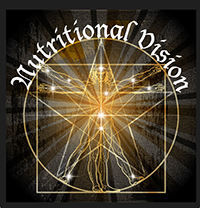GreenMedInfo Summary
Abstract Title:
Berries and ellagic acid prevent estrogen-induced mammary tumorigenesis by modulating enzymes of estrogen metabolism.
Abstract Source:
Cancer Prev Res (Phila Pa). 2010 Jun;3(6):727-37. Epub 2010 May 25. PMID: 20501861
Abstract Author(s):
Harini S Aiyer, Ramesh C Gupta
Article Affiliation:
James Graham Brown Cancer Center, University of Louisville, KY 40202, USA.
Abstract:
To determine whether dietary berries and ellagic acid prevent 17beta-estradiol (E(2))-induced mammary tumors by altering estrogen metabolism, we randomized August-Copenhagen Irish rats (n = 6 per group) into five groups: sham implant + control diet, E(2) implant + control diet (E(2)-CD), E(2) + 2.5% black raspberry (E(2)-BRB), E(2) + 2.5% blueberry (E(2)-BB), and E(2) + 400 ppm ellagic acid (E(2)-EA). Animals were euthanized at early (6 wk), intermediate (18 wk), and late (24 wk) phases of E(2) carcinogenesis, and the mammary tissue was analyzed for gene expression changes using quantitative real-time PCR. At 6 weeks, E(2) treatment caused a 48-fold increase in cytochrome P450 1A1 (CYP1A1; P<0.0001), which was attenuated by both BRB and BB diets to 12- and 21-fold, respectively (P<0.001). E(2) did not alter CYP1B1 levels, but both berry and EA diets significantly suppressed it by 11- and 3.5-fold, respectively, from baseline (P<0.05). There was a 5-fold increase in 17beta-hydroxysteroid dehydrogenase 7 (17betaHSD7), and this was moderately abrogated to approximately 2-fold by all supplementation (P<0.05). At 18 weeks, CYP1A1 was elevated by 15-fold in E(2)-CD and only E(2)-BB reduced this increase to 7-fold (P<0.05). Catechol-O-methyltransferase expression was elevated 2-fold by E(2) treatment (P<0.05), and all supplementation reversed this. At 24 weeks, CYP1A1 expression was less pronounced but still high (8-fold) in E(2)-treated rats. This increase was reduced to 3.2- and 4.6-fold by E(2)-BRB and E(2)-EA, respectively (P<0.05), but not by E(2)-BB. Supplementation did not alter the effect of E(2) on steroid receptors. The diets also significantly suppressed mammary tumor incidence (10-30%), volume (41-67%), and multiplicity (38-51%; P<0.05). Berries may prevent mammary tumors by suppressing the levels of E(2)-metabolizing enzymes during the early phase of E(2) carcinogenesis.
Academic Cite:
Harini S Aiyer, Ramesh C Gupta. Berries and ellagic acid prevent estrogen-induced mammary tumorigenesis by modulating enzymes of estrogen metabolism. Cancer Prev Res (Phila Pa). 2010 Jun;3(6):727-37. Epub 2010 May 25.
Pubmed-Cite:
Harini S Aiyer, Ramesh C Gupta. Berries and ellagic acid prevent estrogen-induced mammary tumorigenesis by modulating enzymes of estrogen metabolism. Cancer Prev Res (Phila Pa). 2010 Jun;3(6):727-37. Epub 2010 May 25. PMID: 20501861
GMI-Cite:
Harini S Aiyer, Ramesh C Gupta. Berries and ellagic acid prevent estrogen-induced mammary tumorigenesis by modulating enzymes of estrogen metabolism. Cancer Prev Res (Phila Pa). 2010 Jun;3(6):727-37. Epub 2010 May 25. PMID: 20501861
Article Published Date : Jun 01, 2010
Study Type : Animal Study
Additional Links
Substances : Berries: All : CK(1904) : AC(501), Blueberry : CK(334) : AC(112), Ellagic Acid : CK(141) : AC(71), Raspberry : CK(47) : AC(32)
Diseases : Breast Cancer : CK(3592) : AC(1064), Estrogen Dominance : CK(107) : AC(38), Estrogen Dysregulation: 2/4/16 hydroxyestrone ratios : CK(40) : AC(9)
Pharmacological Actions : Chemopreventive : CK(2835) : AC(787), Estradiol Antagonists : CK(2) : AC(1)

No Comments Yet